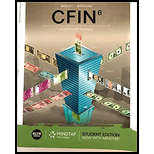
The graph which shows the relationship between yields and maturities on a particular date is known as the yield curve, and this relationship is simply called the term structure of securities. The yield curve could be upward sloping where the long-term yields are higher than the short-term yields and is also known as normal yield curve. However, if the long-term yields are lower than the short-term yields then the slope with be downward sloping and is referred to as inverted or abnormal yield curve.
Interest rate consists of risk-free rate, real risk-free rate and inflation premium, and a risk premium such as liquidity risk (LP), default risk (DRP) and maturity risk (MRP). Since, real risk-free rate generally remains constant, it is the changes in the expectation of risk premium and inflation which affects the interest rate of the security. Hence, inflation expectation is the most significant reason for changes in yield and determination of yield curve.
Interest rate or yield on treasuries can be determined using the below equation, where default risk premium DRP and liquidity premium (LP) is zero, as treasuries are considered as liquid and default free investment. Maturity risk premium (MRP) is there as they have differing maturity securities issued.
Expectation theory states that the shape of the yield curve depends on the expectation of future inflation rate and hence an increasing inflation rate will result in an upward sloping curve whereas a decreasing rate would result in downward sloping curve.
Yield on any bond is the average of the interest rates that is expected during its life and hence the yield of a bond with n year to maturity will be as below:
Here,
Interest rate for the first year of bond’s remaining life is “
Interest rate for the second year of bond’s remaining life is “
and so on.
Annual risk-free rate for 2019, 2020 and 2021 would be 2.2%, 1.8% and 2.9% respectively. The bonds have no other risks.
Trending nowThis is a popular solution!

Chapter 5 Solutions
CFIN -STUDENT EDITION-W/ACCESS >CUSTOM<
- What are the obstacles to work through emotional wellness coping methods, and increasing self-understanding, and how to work through them? What are the advantages and disadvantages of emotional wellness, coping methods, and increasing self-understanding?arrow_forwardWhat is the present value of $10,000 to be received in 5 years, assuming a discount rate of 10%?A) $6,210B) $6,810C) $7,580D) $8,100arrow_forwardDepreciation is:a) The increase in the value of an asset over time.b) The allocation of the cost of a tangible asset over its useful life.c) An amount paid for the maintenance of an asset.d) An asset's market value at the end of the accounting period.arrow_forward
- Depreciation is:a) The increase in the value of an asset over time.b) The allocation of the cost of a tangible asset over its useful life.c) An amount paid for the maintenance of an asset.d) An asset's market value at the end of the accounting period. Need helparrow_forwardWhat is the corporate finance how this is the part of finance?arrow_forwardExplain! Which of the following represents the primary goal of financial management?A) Maximizing net incomeB) Maximizing shareholder wealthC) Minimizing costsD) Maximizing market sharearrow_forward
- Which of the following represents the primary goal of financial management?A) Maximizing net incomeB) Maximizing shareholder wealthC) Minimizing costsD) Maximizing market sharearrow_forwardExplain! Which of the following is an example of a capital budgeting decision?A) Determining how to finance a new projectB) Deciding whether to pay dividends to shareholdersC) Deciding whether to purchase a new piece of equipmentD) Managing the company's cash balancesarrow_forwardExplain What does a beta coefficient of 1.5 indicate for a stock?A) The stock is less volatile than the marketB) The stock has no correlation with the marketC) The stock is 50% more volatile than the marketD) The stock is 50% less volatile than the marketarrow_forward
- What does a beta coefficient of 1.5 indicate for a stock?A) The stock is less volatile than the marketB) The stock has no correlation with the marketC) The stock is 50% more volatile than the marketD) The stock is 50% less volatile than the marketarrow_forwardWhat is the formula for calculating the net present value (NPV) of an investment?A) Future Cash Flows × Discount RateB) Present Value of Cash Inflows - Initial InvestmentC) Internal Rate of Return - Discount RateD) Net Income / Initial Investmentarrow_forwardWhich of the following is an example of a capital budgeting decision?A) Determining how to finance a new projectB) Deciding whether to pay dividends to shareholdersC) Deciding whether to purchase a new piece of equipmentD) Managing the company's cash balancesarrow_forward
 Intermediate Financial Management (MindTap Course...FinanceISBN:9781337395083Author:Eugene F. Brigham, Phillip R. DavesPublisher:Cengage LearningPrinciples of Accounting Volume 1AccountingISBN:9781947172685Author:OpenStaxPublisher:OpenStax College
Intermediate Financial Management (MindTap Course...FinanceISBN:9781337395083Author:Eugene F. Brigham, Phillip R. DavesPublisher:Cengage LearningPrinciples of Accounting Volume 1AccountingISBN:9781947172685Author:OpenStaxPublisher:OpenStax College


